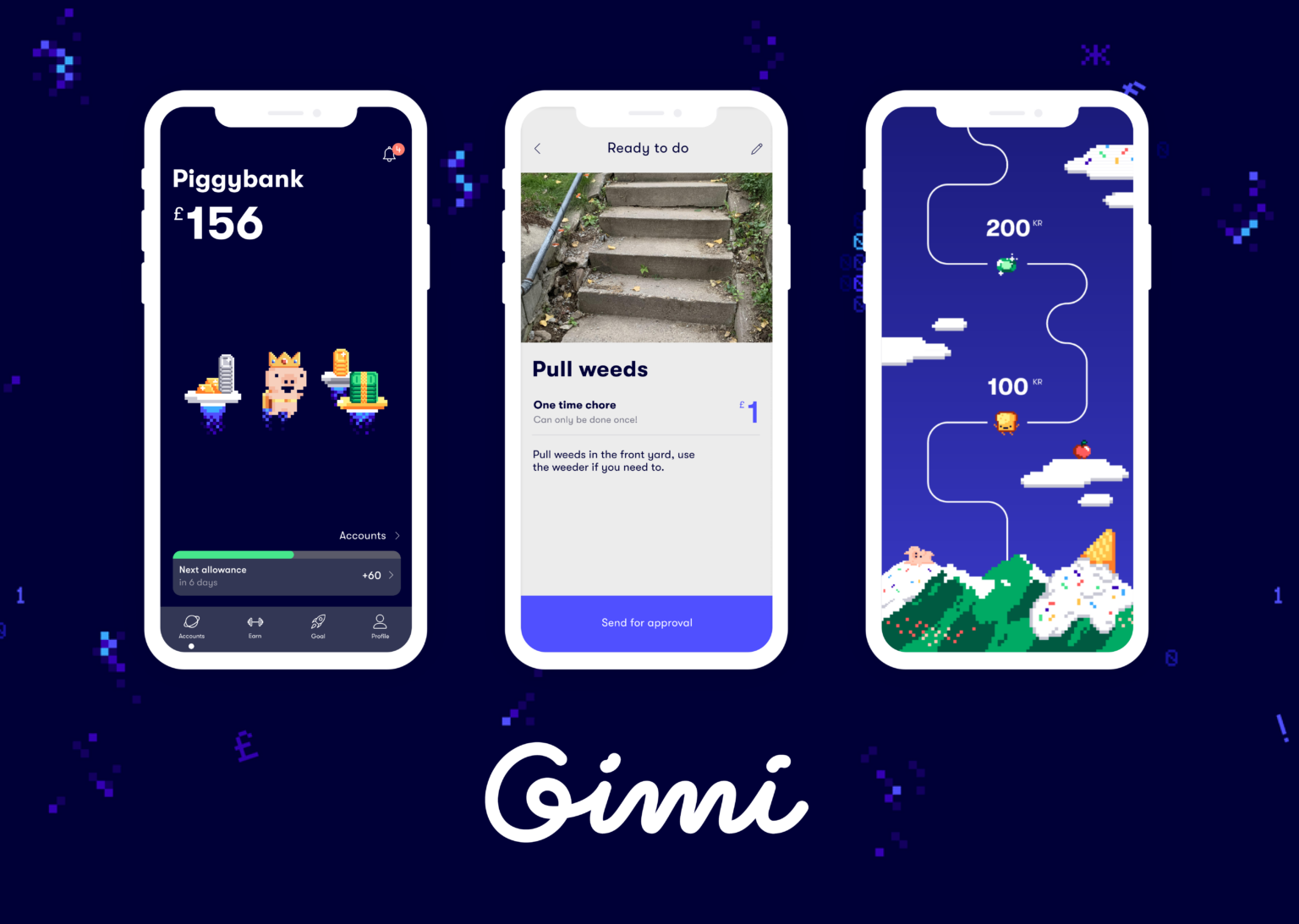What with work pressures, after-school clubs, dance lessons and play dates, it’s fair to say many parents find it a bit of a struggle teaching their children about all-important financial literacy. Thankfully, there are socially-minded fintech innovators who can help with this challenging task. One of these is Swedish app Gimi, which uses behavioural science and gamification to show children how to manage money – and persuade them to do a few household chores in the process. What’s not to like? Marqeta caught up with Gimi’s communication and partnerships manager Sofie von Krusenstierna to find out more. Here’s what she had to say…
Gimi is an allowance app created specifically for children. Can you tell us how the concept came about?
“The business is actually the brainchild of professional footballer Philip Haglund. While taking some time out due to injury in 2015, Philip, a student of Stockholm School of Economics, had spotted that the world was fast shifting to a cashless economy. He realised that little was being done to help kids understand this new financial landscape – and that the physical piggy bank of his childhood was about to become a thing of the past.
“His thinking was underpinned by data from the OECD and the Programme for International Student Assessment showing that financial literacy among today’s youth is decreasing. Sadly, many young people don’t understand the value of money and how to handle it correctly. We wanted to help youngsters learn how to manage a range of financial actions such as buying new trainers, putting money aside for pensions, and how to use credit sensibly.”
So what are the features of Gimi and how does it work?
“The Gimi app is a dual app experience, with engaging functionalities for children and parental control for the parents. In short, in the app the recurring allowance is automated – so it’s never missed. The child can set up savings goals and complete chores with rewards. There is also a set of features that are about educating, such as lessons in personal finance, a chatbot that teaches money concepts and supportive educational material such as tutorials and instructional videos.
“It is all about educating personal finance concepts while the children get to practice it in their real life.”
We hear Gimi has a novel approach to supporting children’s financial learning, can you tell us more about this?
“The key to engaging children is to understand what motivates them and keeps them interested. So, we’ve used behavioural science to design our app in a way that young people find stimulating and compelling. The app’s development is informed by scientists in digital didactics, finance and psychology. We’ve deliberately made it look like a game with XP (experience points) and levels depicted as rockets and planets, and because of that kids are actually engaging with it in a really fun way. For example, children can earn XP from doing chores at home, which obviously goes down well with mums and dads. The main point is that using the app doesn’t feel like a lesson but users are learning a lot. Ever present throughout the app is the Gimi piggy bot and this keeps a link with the piggy bank of Philip’s and many other adults’ childhoods.”
Which age groups are getting the most benefit from the app?
“Thanks to our multilevel approach, it’s possible to provide a learning experience for children from five or six years old when they start school and receive their first weekly allowance, but can go all the way up to 18 years old. However for the moment, children aged between eight and 15 are getting the most benefit.”
It sounds like Gimi might be more of an educational proposition than a fintech, would that be right?
“Actually, we very much see ourselves as part of the edtech sector and as we’ve evolved this has become a key area of focus for us. By carving out a niche in education, we’re forging partnerships with schools, banks, enforcement agencies and companies overseas that want to offer lessons on financial literacy. We’re giving educationalists more options to help all the children in their care succeed.
“The app provides a more personalised learning experience that is appropriate to each user’s own level of financial literacy. This keeps things really motivational and helps people to grow their knowledge. We’re also finding this is a particularly good approach for children who might normally have difficulty concentrating. It can really enhance what is taught in the classroom.
“As a result, schools are super interested in the app and right now we are testing lessons in schools, because they can see the need to teach this but don’t know how to or their materials are outdated and not relevant to today’s world. So I would say we are both a fintech and an edtech business.”
Since launching, according to Stockholm-based Gimi, it has attracted more than 1.2 million users in the Nordics and more than 40,000 in the UK through a combination of social media and word of mouth. To find out more, go to gimitheapp.com/en/about.
Marqeta regularly engages with companies in the payments ecosystem to learn more about the new approaches they are bringing to solving challenges related to financial services and money movement in general.
Learn more from our interviews with:

